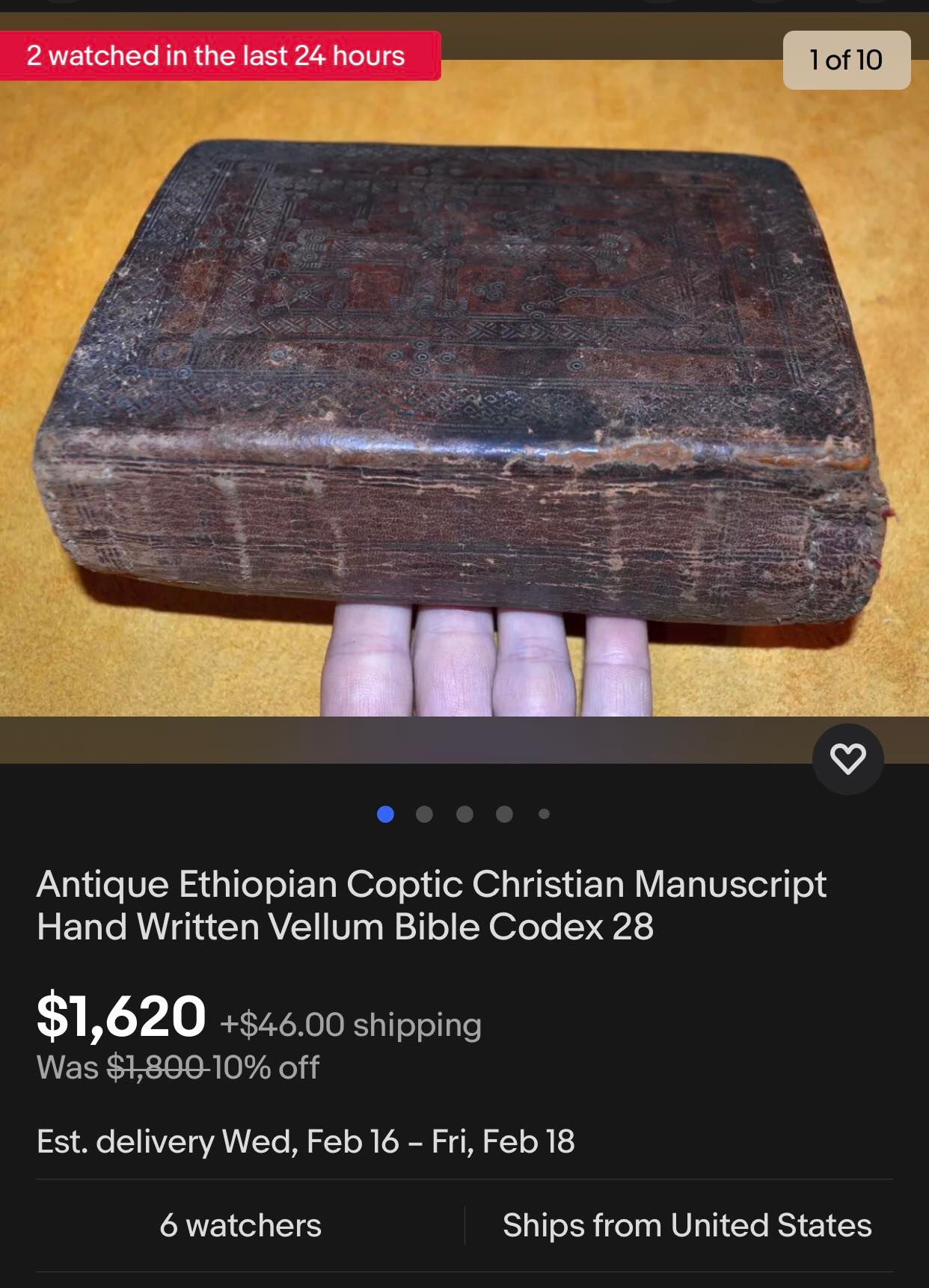For the past twenty years I have been studying Episcopal or Anglican theology and also interested in early Christianity throughout the world. Living in Ethiopia since 2012 and in Tigray since 2015 gave a wonderful opportunity to learn about the culture and history of Ethiopian Orthodox Church whose roots begin in the Axumite Empire which is now Tigray. In September 2018 I made an extended visit to the city of Axum including to the Church of Our Lady Mary of Zion. The first church site of Saba people who would become the people of Tigray( ህዝቢ ትግራይ). The original establishment of this church goes back to the 4th century when the Axumite King Ezana converted to Christianity.
As I was a visiting Professor from Mekelle University the priest in attendance allowed me to see an ancient Bible. He carefully opened a 300+ year old Bible composed of goat skin pages and I take the photograph below. For several minutes I pondered what it was like to carefully construct and write such a treasure. How hundreds of years ago Christian followers gathered while the Ge’ez language in which it was written was spoken aloud by the priest for the congregation to hear. I was touched by the Holy Spirit by it’s presence. This reflection inspired by this document made me realize that it was not meant to be the private ownership of one person who was likely not to even be a believer in the message carried. No pious Christian would personally own such a treasure for himself. Instead it is a legacy to be shared by the Tigray.

Over 90% of Tigray are Ethiopian Orthodox Christians. Even for the Muslim population in Tigray there is special relationship to the Tigray born church because it was an ancient Tigray king, Christian King Negash, who welcomed refugees, followers of the Prophet Mohammed (Peace be upon him), who were fleeing persecution from nonbelieving Saudi royalty in the 7th century.
Unfortunately now we know that Christian worshipers in Axum and Islamic worshipers in the town of Negash were attacked by Eritrean forces and religious relics stolen from both the church in Axum and the mosque in Negash. Although an investigation by Mariz Tadros , Professor of Politics and Development at the Institute of Development Studies, University of Sussex as well as director of the Coalition for Religious Equality and Inclusive Development (CREID) reported in March 2021 that the purpose of the attacks was to demoralize religious followers she wondered if relics were stolen. Ethiopian and Eritrean supporters denied these claims but now new evidence as come to light.

For the past few months and accelerating the past week or so many precious Ethiopian Orthodox relics including ancient Bibles and Tabots (symbols of the Arch of the Covenant) have appeared for sale on Ebay. The international police Interpol and civic minded art experts are investigating the likelihood that the sales are coming from Eritrea. The meaning and value of these items is that they allow present day Tigrayans to connect with their ancient history and are a legacy to be preserved for generations to come and shared by the community. I am pleased to hear that Ebay is cooperating with requests not to sell this items and to expose the sellers.
A Tigray friend observed last week that over a 24 hour period that more than 20 precious Bibles and other relics were sold on Ebay. Ebay has apparently promised to only accept legitimate items that are well documented. This morning I searched Ebay and found no Bibles. There were 8 antique pre-owned paintings on wood frame mostly priced below $200 shipping from Germany. I pray international authorities and people of good will will cooperate to stop these sales and recover them so that they can be returned to their rightful owners to restore their legacy.


